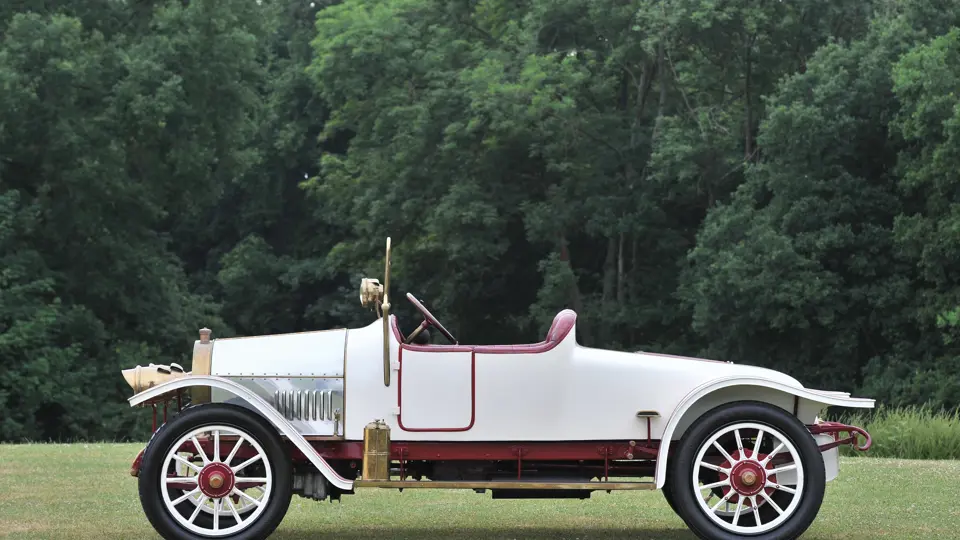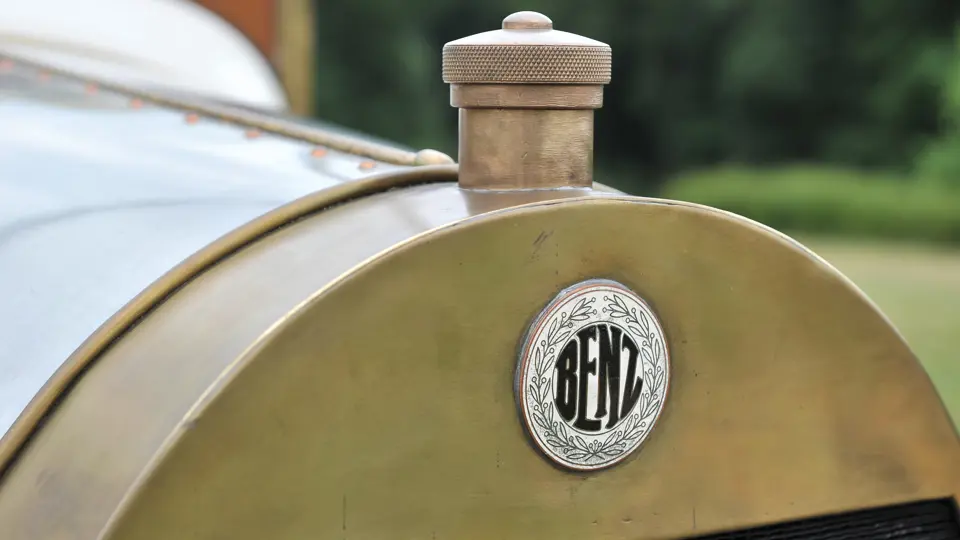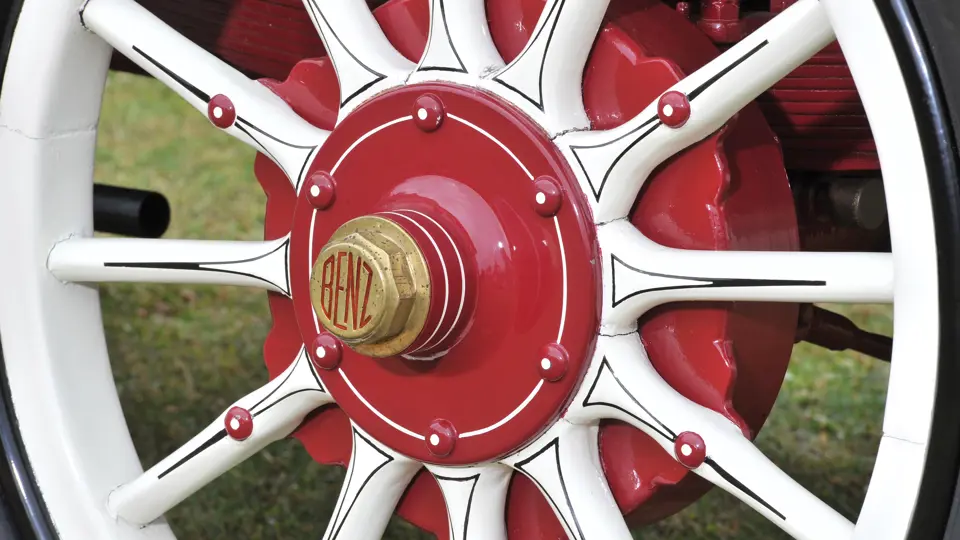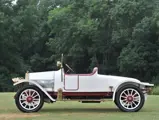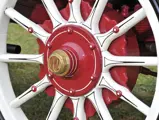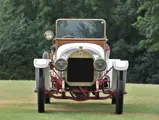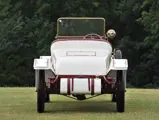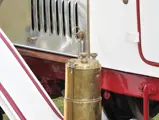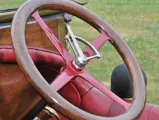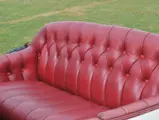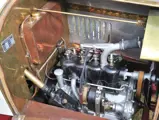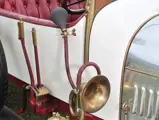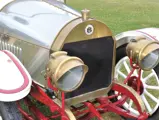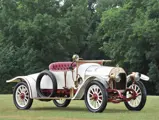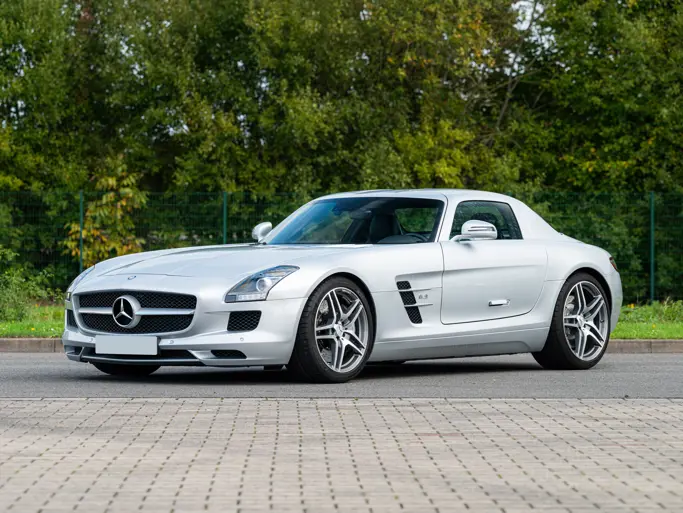8/20 hp, 1,950 cc inline L-head four-cylinder engine, four-speed manual gearbox with shaft drive, solid front axle and live rear axle with semi-elliptic leaf springs, and a mechanical transmission brake with two-wheel parking brakes. Wheelbase: 2,850 mm
In 1906, Germany introduced a motor vehicle tax, and its levy fell heavily on large-displacement cars. Benz’s reaction was a 2,410-cubic centimetre 10/18 PS car that was introduced in 1908. This economical design, which flew beneath the 10 PS taxation threshold, appealed to a new market segment, the Berlin taxi drivers. Thus began a long German tradition of Benz taxis, which is continued today by successor company Mercedes-Benz.
There followed an even smaller car, the 1,570-cubic centimetre 6/14 PS of 1910, and an intermediate car, the 8/20, of the type seen here, which would remain in production from 1912 until after World War I. This jaunty Benz 8/20 PS Roadster is tastefully outfitted in ivory with maroon chassis and mouldings and burgundy leather upholstery. As an older reconstruction, it displays a modicum of patina on the brass radiator, bulb horn, and Herman Riemann’s headlamps. The latter are acetylene type, but they are not set up for operation. A brass Lucidus spotlight with a mirror on the back side is mounted to the driver’s windscreen post. The wood artillery wheels are in the body colour and coachlined in black with red hubs.
The engine compartment is clean and well presented. The buttoned leather upholstery shows just a bit of age and soil, but it is unmarred and shows no wear. The instrument panel is of varnished wood and has gauges for oil pressure and fuel pressure. There is no speedometer.
It is a true speedster, as there is no hood, but the rear of the body has a capacious compartment with a padded lid. It is not presently outfitted as such, but it could be made into a dickie seat, for which a step plate is already in place. As a smart Brass Era Roadster, this car is ideal for veteran and vintage rallies and tours.
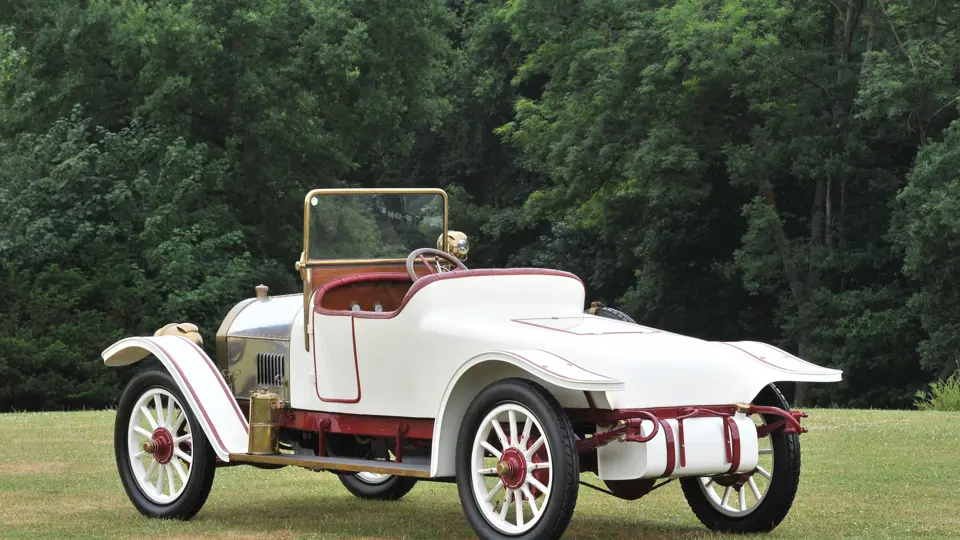
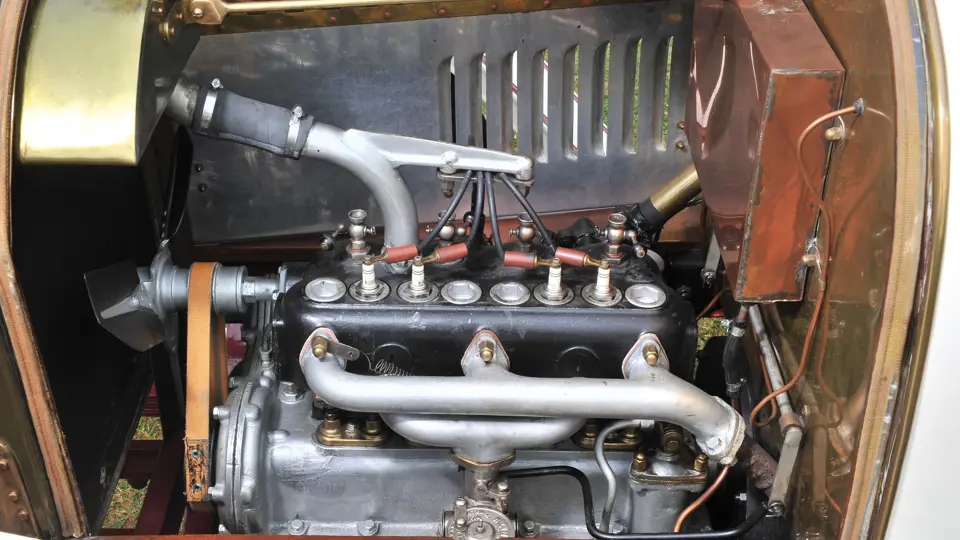


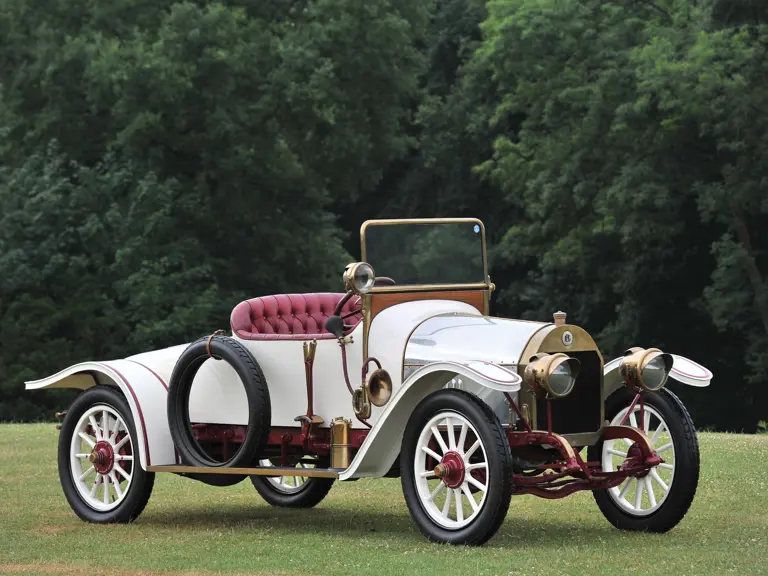

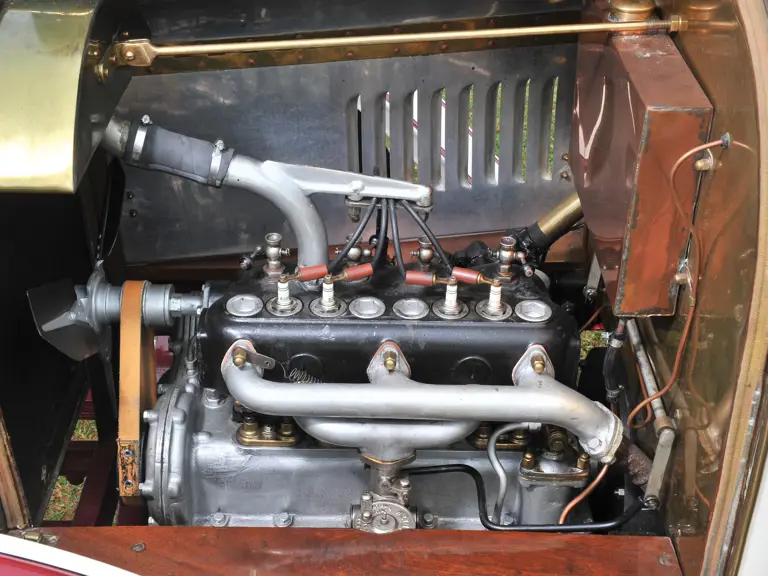

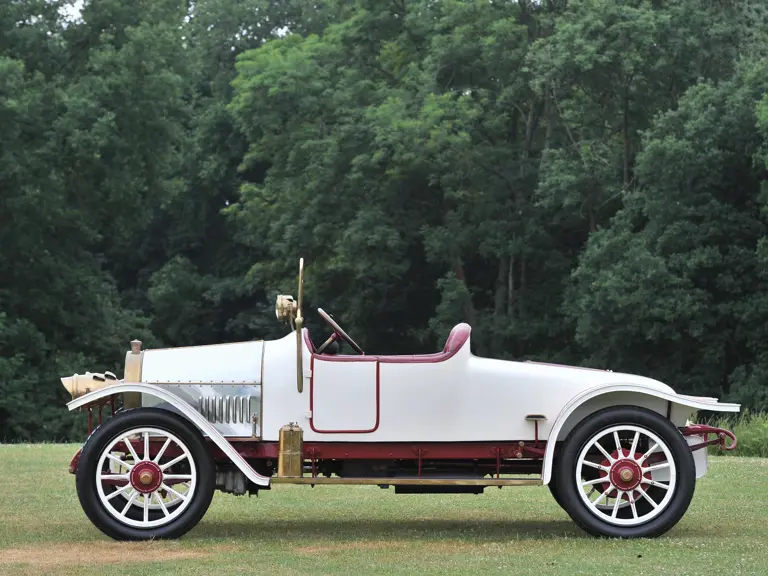


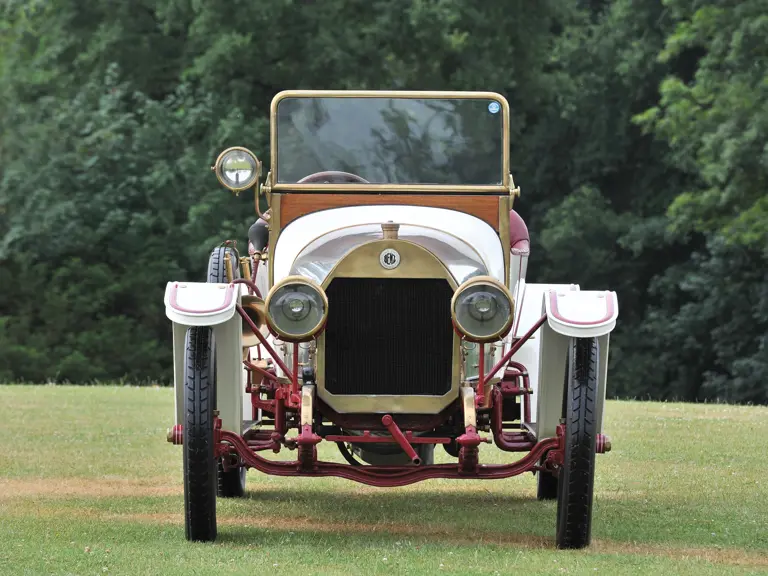
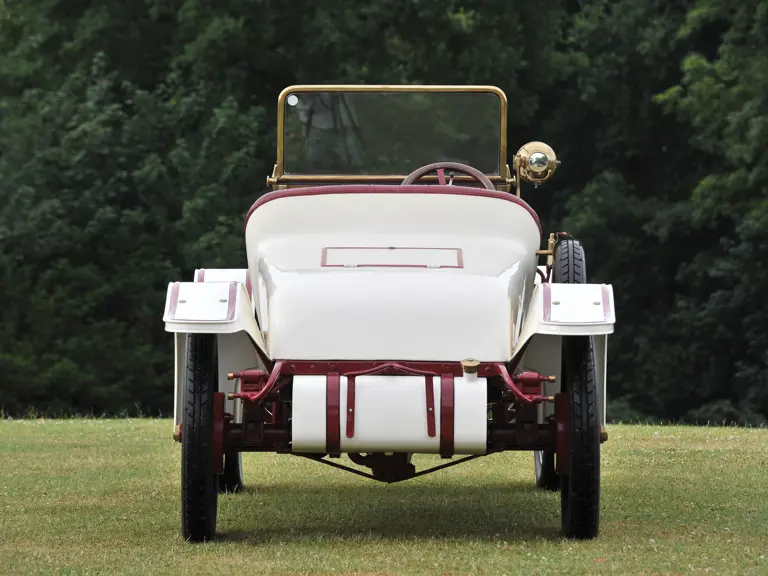

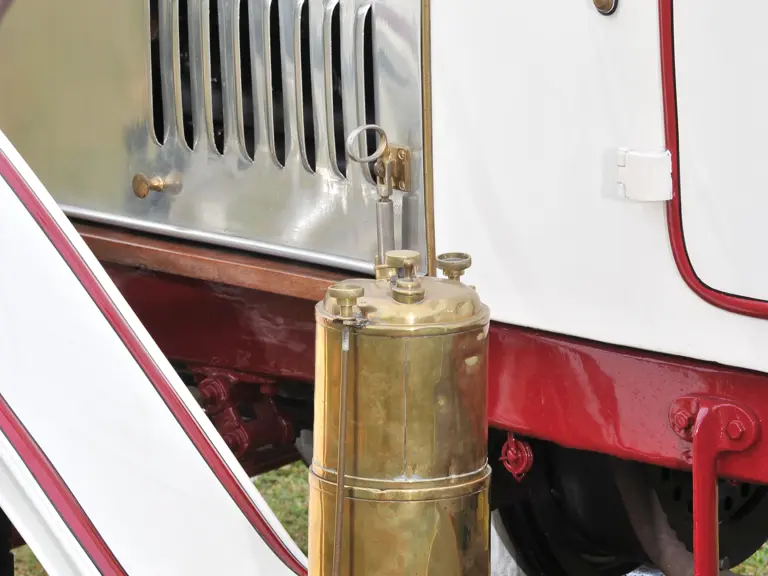
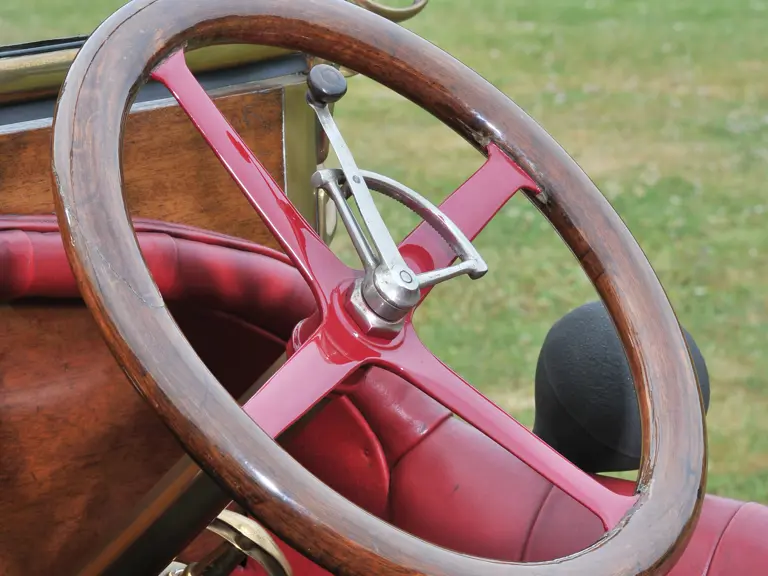
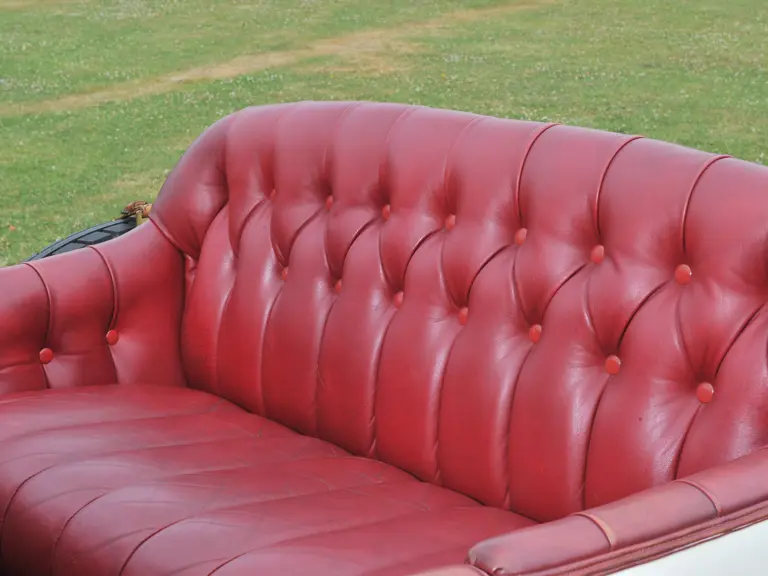
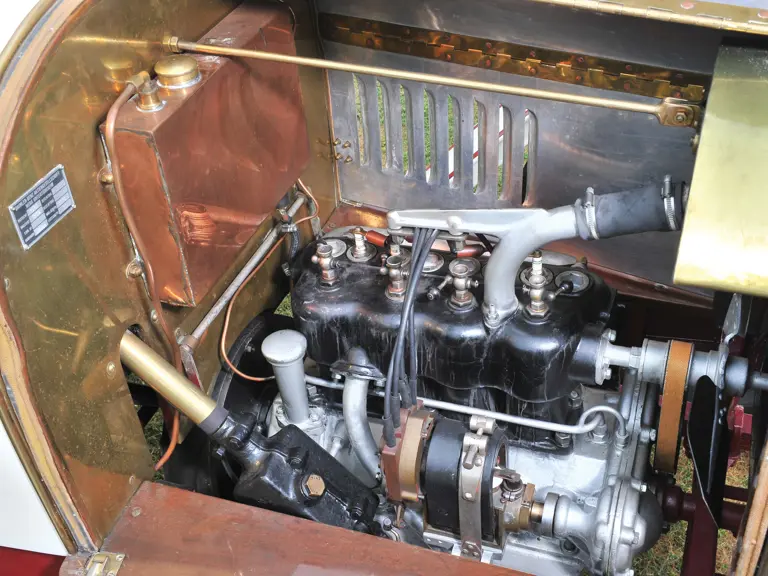
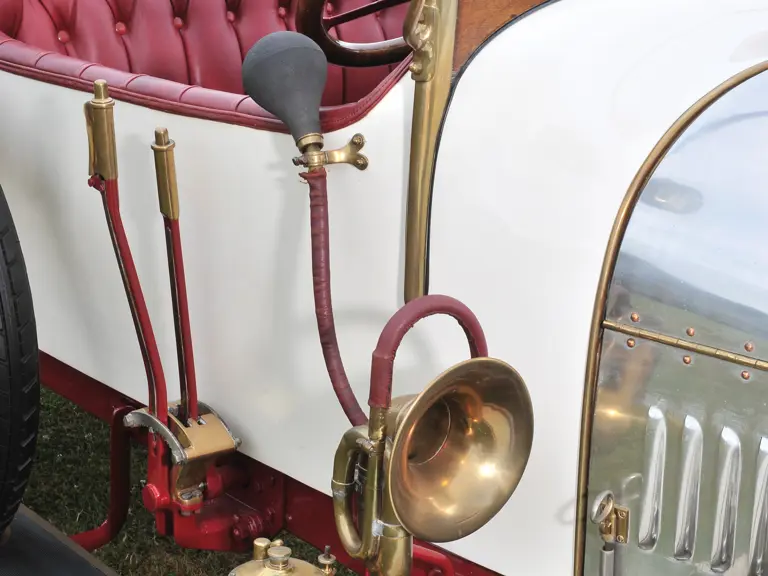
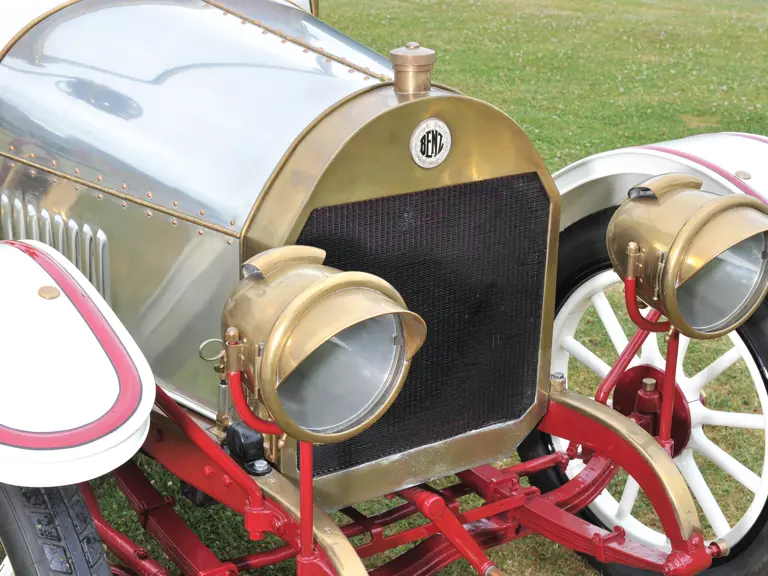

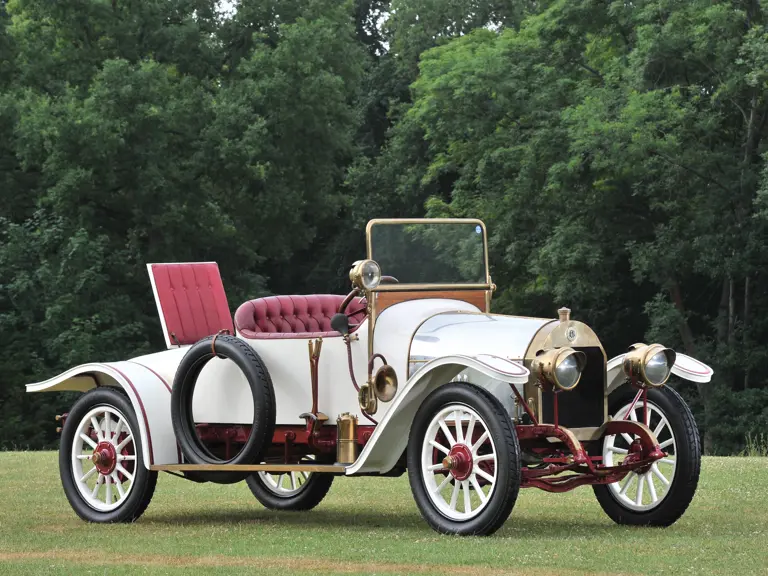
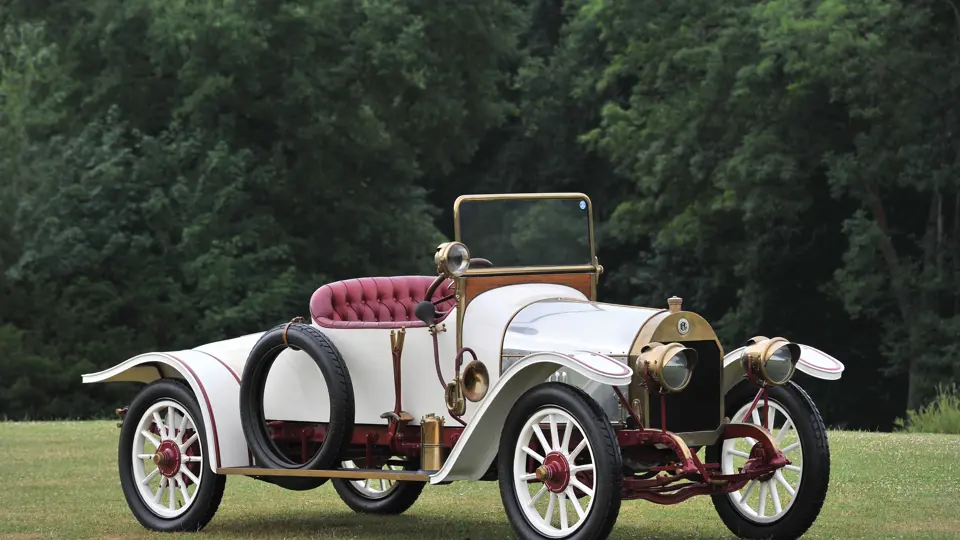
 | London, United Kingdom
| London, United Kingdom
